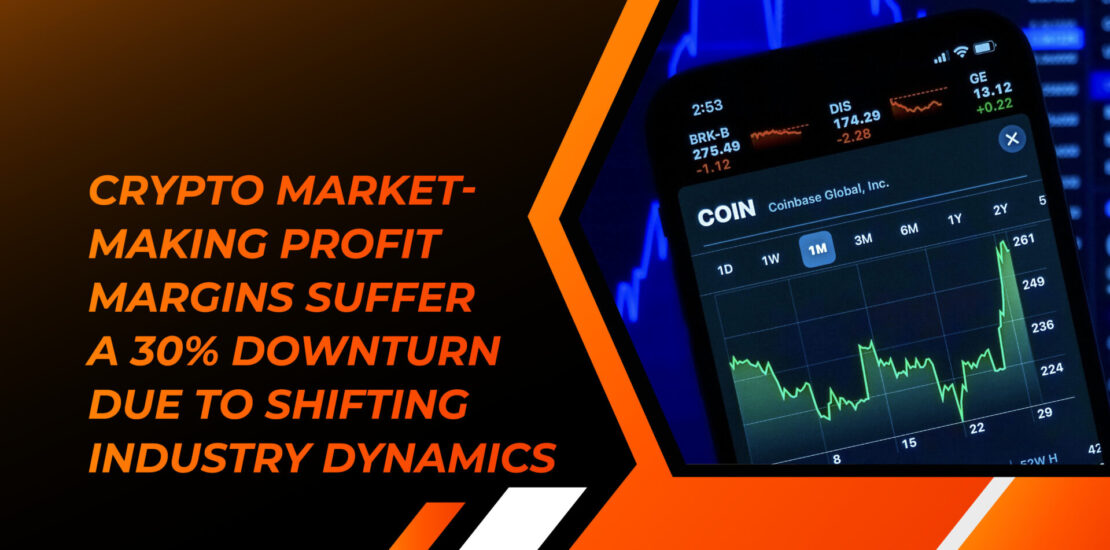- September 7, 2023
- Posted by: displayico@gmail.com
- Category:


The once highly lucrative realm of crypto market-making, a business centered on facilitating trades and capitalizing on the price spread between buying and selling, is grappling with a series of challenges. In recent times, a confluence of factors has combined to exert downward pressure on profit margins in this domain.
A prominent factor contributing to this decline stems from heightened investor caution following the significant downturn in the crypto market last year, which obliterated nearly $2 trillion in market value, as reported by Bloomberg. The aftermath of exchanges such as FTX filing for bankruptcy has left a substantial volume of digital assets stranded on these collapsed platforms. This has, in turn, fueled apprehension among market makers, who are wary of potential future upheavals.
In response to these risks, market-making firms have begun implementing several strategies aimed at reducing exposure, albeit at the cost of diminishing profit margins, according to the Bloomberg report. One such strategy involves diversifying operations across multiple cryptocurrency exchanges to mitigate concentration risk. Additionally, market makers are increasingly shifting their digital asset holdings away from trading platforms and using them as collateral to secure tokens for deployment on crypto platforms. This collateral is typically entrusted to custodians or prime brokers, ensuring that only the borrowed tokens are vulnerable in the event of an exchange failure.
Unsurprisingly, these risk-mitigation measures come at a price. Bloomberg highlights that employing intermediaries to oversee collateral management can lead to a 20% to 30% reduction in profitability when compared to directly leveraging coins through a trading platform. Nevertheless, market participants are recognizing the imperative nature of these strategies and acknowledging that elevated costs have become an inherent aspect of operating in the crypto market.
Le Shi, head of trading at the crypto-focused market maker Auros, emphasized the industry’s shift in perspective, stating, “The FTX debacle was a wake-up call for the industry.” He acknowledged that in the past, the risks associated with leaving digital assets on exchanges might not have been a top priority, but this perspective has now evolved. “We are fully aware that increased costs are going to be a way of doing business now,” he affirmed.
Meanwhile, an analysis of crypto exchange market depth, which gauges the market’s ability to absorb substantial orders without impacting prices, reveals that liquidity has significantly diminished compared to the bullish period during the pandemic. A report by crypto researcher Kaiko indicates that the number of trades within 2% of Bitcoin’s mid-price on exchanges has plummeted by more than 60% since October 2022. Bloomberg cited the Kaiko note, which attributed this decline to a combination of structural factors, including market makers exiting the space due to losses or adjusting their risk management strategies post-FTX, as well as the low volatility environment deterring liquidity providers from participating in the market.


